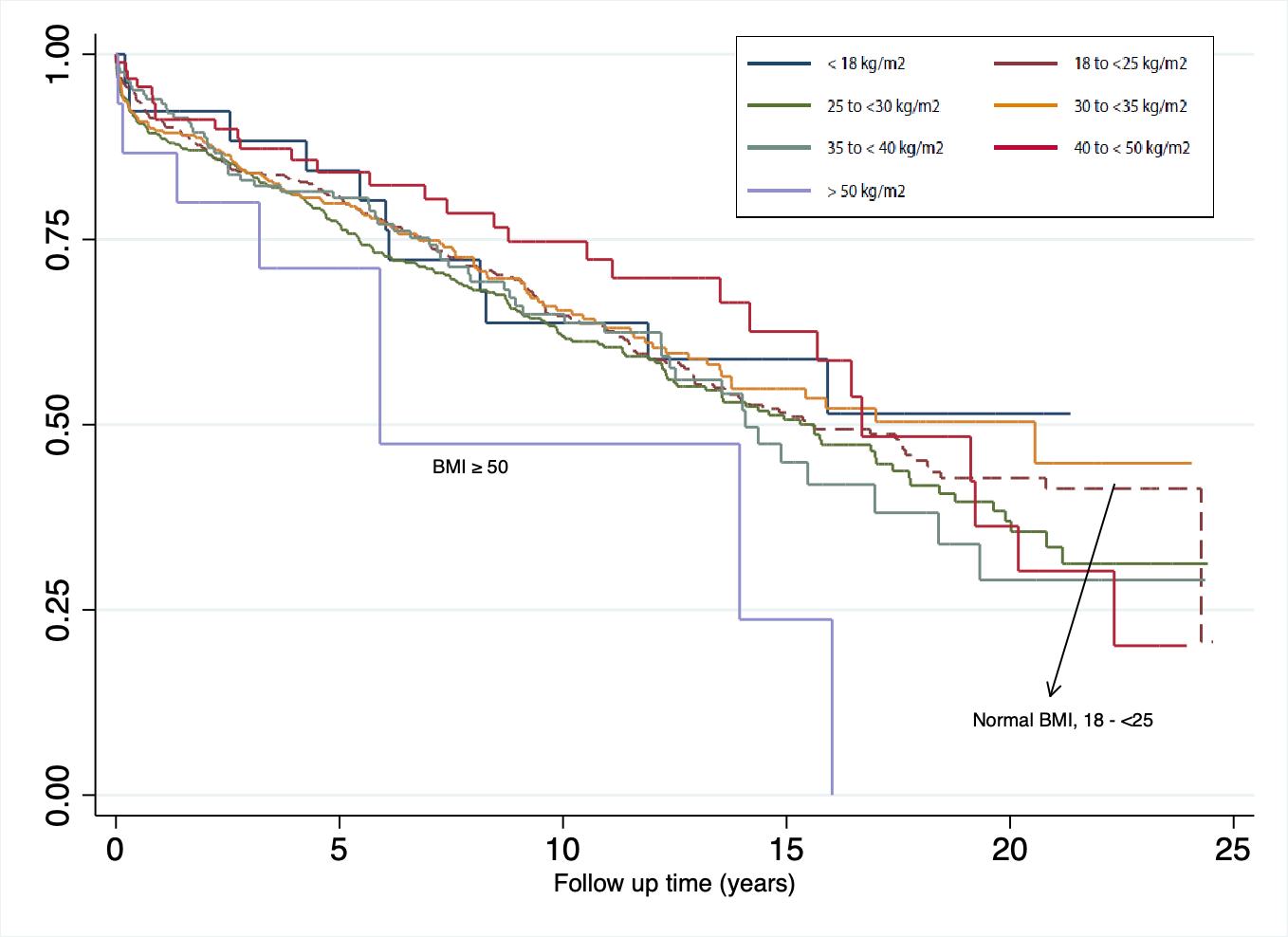Liver Transplant Recipients with BMI 40 to <50 kg/m2 Have Excellent Patient and Graft Survival
University of Wisconsin School of Medicine and Public Health, Madison, WI
Meeting: 2020 American Transplant Congress
Abstract number: D-130
Keywords: Graft survival, Liver transplantation, Obesity
Session Information
Session Name: Poster Session D: Liver: Recipient Selection
Session Type: Poster Session
Date: Saturday, May 30, 2020
Session Time: 3:15pm-4:00pm
 Presentation Time: 3:30pm-4:00pm
Presentation Time: 3:30pm-4:00pm
Location: Virtual
*Purpose: Obesity rates in the United States (US) have reached nearly 40%, which has led to an increasing proportion of liver transplant (LT) candidates with high BMI. Although BMI is increasing in the general population, more than half of US transplant centers will not consider LT listing in candidates with a BMI >40 kg/m2. Despite the widespread use of BMI cutoffs, data supporting this practice are weak and conflicting, and may result in the exclusion of patients from LT without sufficient cause. The purpose of our study was to examine the effect of BMI on LT outcomes at a single center that does not employ a BMI cutoff for LT.
*Methods: We performed a retrospective cohort study of LT recipients in the Wisconsin Allograft Recipient Database (WisARD) at UWHealth. Adult patients who underwent LT or simultaneous liver/kidney transplants (SLK) from 1994 to 2017 were included and divided by BMI into groups for analysis (see results). Mean values of continuous variables were estimated and stratified based on recipient BMI categories. Univariate and multivariate analysis of categorical variables were conducted using log rank tests and continuous variables using cox proportional hazards regression models. Kaplan-Meier survival curves compared the survival rates of BMI groups. All analyses were conducted using SAS 9.4 and STATA SE 15.
*Results: A total of 1657 patients were included, and fell into the following BMI groups (in kg/m2): <18 (n=26), 18 to <25 (n=485), 25 to <30 (n=539), 30 to <35 (n=334), 35 to <40 (n=168), 40 to <50 (n=92) and >50 (n=15). Patients with BMI 40 to <50 kg/m2 were found to have similar graft (HR 0.70 [95% CI 0.4-1.22], p=0.21) and patient (HR 0.71 [0.4-1.23], p=0.22) survival on multivariate analysis compared to those with a normal BMI. In contrast, patients with BMI >50 trended towards decreased graft (HR 1.95 [0.70-5.48], p=0.20) and patient survival (HR 1.97 [0.70-5.53], p=0.20) but was not significant. Figure 1 shows patient survival by BMI category. As found in other studies, patients with BMI >40 kg/m2 had a higher number of readmissions (p=0.03) and admission length of stay (p<0.001) compared to other BMI categories. Wait time to LT was also significantly longer (p=0.04) in patients with BMI >35, as has been previously reported.
*Conclusions: This large, single-center study suggests that LT recipients with BMI 40 to <50 kg/m2 have excellent patient and graft survival, comparable to recipients with normal BMI. Current listing practices that routinely exclude patients based on high BMI alone should be reexamined.
To cite this abstract in AMA style:
Daniel K, Hause J, Osman F, Mezrich J, Spengler E. Liver Transplant Recipients with BMI 40 to <50 kg/m2 Have Excellent Patient and Graft Survival [abstract]. Am J Transplant. 2020; 20 (suppl 3). https://atcmeetingabstracts.com/abstract/liver-transplant-recipients-with-bmi-40-to/. Accessed December 29, 2025.« Back to 2020 American Transplant Congress

